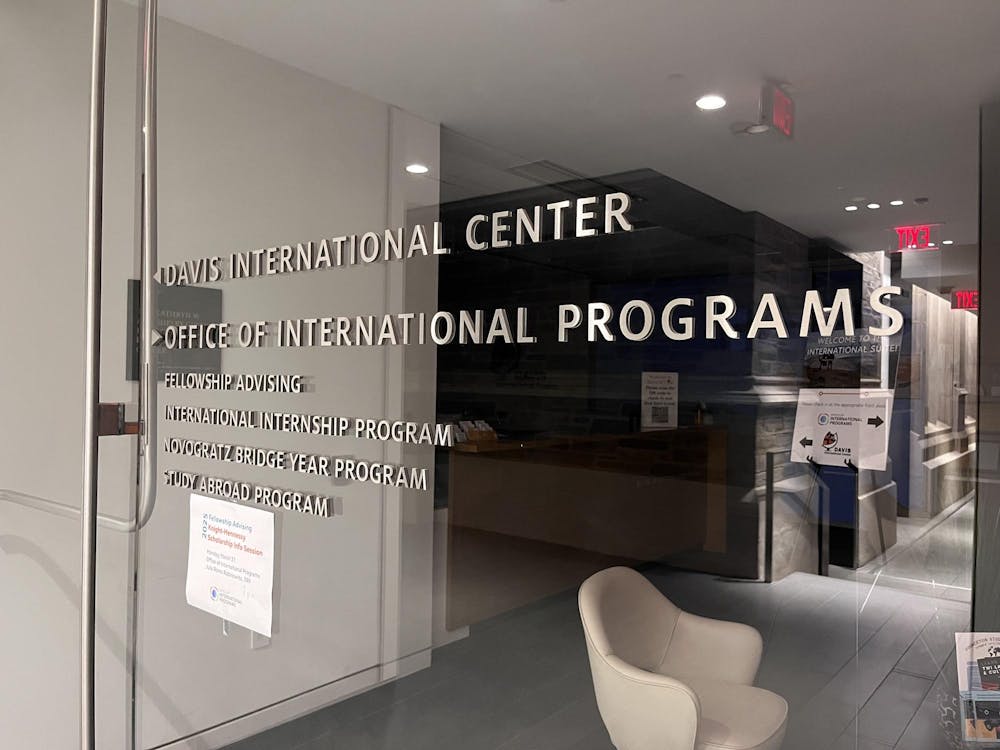Despite objections by some prominent alumni, the University Board of Trustees approved plans to demolish the building at 86 Olden St. during a meeting in March. The home for the new Andlinger Center for Energy and the Environment — which will feature teaching and research programs focusing on energy conservation, environmental protection and other topics — will be built in its place.
Under the current plans, a lecture hall and a garden will be built on the area where 86 Olden St. currently stands, University Architect Ronald McCoy GS ’80 said in an e-mail.
The Ferris Thompson Gateway and the adjacent wall surrounding the building will not be demolished, McCoy noted. The wall and gateway were given to the University in 1911 by Ferris Thompson, Class of 1888. Until the 1960s, alumni walked through the gateway on their way to the annual baseball game against Yale that occurred on the Saturday of Reunions.
“The wall is a very real and beautiful architectural element,” McCoy said. “It tells the story of Princeton’s athletics traditions. The campus is a palimpsest of architectural elements, and the monumental character of the wall, and particularly the Ferris Thompson Gateway, represents a layer of history that will be given new life as the entrance to the gardens of the Andlinger Center.”
The building at 86 Olden St., previously called the Osborn Clubhouse, also has ties to University athletics. The football team used Osborn Clubhouse for nearly 80 years, Barksdale Maynard ’88, a former professor of architectural history at the University and one of the most outspoken opponents of the plan, told The Daily Princetonian in March.
“In terms of the history of the sport, it is our only reminder of that golden age,” he explained. “And that’s what made Princeton famous: Tiger football.”
Elizabeth Plater-Zyberk ’72, who is dean of the University of Miami’s School of Architecture and is a former University trustee and former chair of the board’s Committee on Grounds and Buildings, said that the demolition of any historic buildings concerns her.
“I just think we should be very careful about the loss of our older buildings,” she said. “The University should be careful about the loss of its older buildings and careful about how it inserts new buildings into an area that is predominately historical.”

Maynard cited the age of the building and its unique history as main reasons for why he opposed its planned demolition, noting that it is one of the only remaining pre-20th century buildings on campus.
“If you walk down Prospect ... you see a 19th-century cityscape,” he told the ‘Prince’ in March. “If you begin to build [modern buildings], it’s going to change what Prospect is all about.”
Plater-Zyberk said that the existing plan, as described by McCoy, is somewhat unusual.
“It seems kind of odd saving the wall, but not the building itself,” she said.

The trustees considered the building’s history when making its decision, McCoy said. In an opinion column published last month in the ‘Prince,’ McCoy explained that though the architects intended to incorporate the existing building into the design when the University began planning construction, this idea ultimately proved infeasible.
“As we have confronted the demands of the program and the limits of the site, we have determined that it is not possible to save or re-use 86 Olden St.,” he said in the column. “We also have studied relocating the house, but locations that look like they are available today are indeed the sites for the next generation of facilities that will serve Princeton. We have concluded that we will demolish 86 Olden St. in order to create conditions that will allow the Andlinger Center to thrive and the beauties of the campus to expand.”
Jim Axtell, a history professor at the College of William & Mary, who authored a book titled “The Making of Princeton University: Woodrow Wilson to the Present,” said in an e-mail that he believes the University considered all arguments before coming to a decision on the demolition plan.
“I ... trust that Ron McCoy, the administration and the trustees have given extremely careful thought to the problem and have come to the best possible solution for today and tomorrow without ignoring the claims of the past,” he explained.
Henry Osborn, Class of 1877, provided initial funding for the existing building, which originally bore his name. Osborn was a eugenicist who believed in the superiority of the Caucasian race. He also taught comparative anatomy at Princeton and served as the director of the American Museum of Natural History in New York City.
In 1971, the Osborn Clubhouse became the Third World Center, which provided a home for minority students on campus. In 2002, the center’s name was changed to the Carl A. Fields Center for Equality and Cultural Understanding, and the center moved to its current location across the street at 58 Prospect Ave. in the fall of 2009.
The Princeton Regional Planning Board must approve the demolition and construction plans before they are formalized. The plans were submitted to the board last week, and there will be a public hearing before it makes a decision, McCoy said. The date of this hearing has not yet been set.







